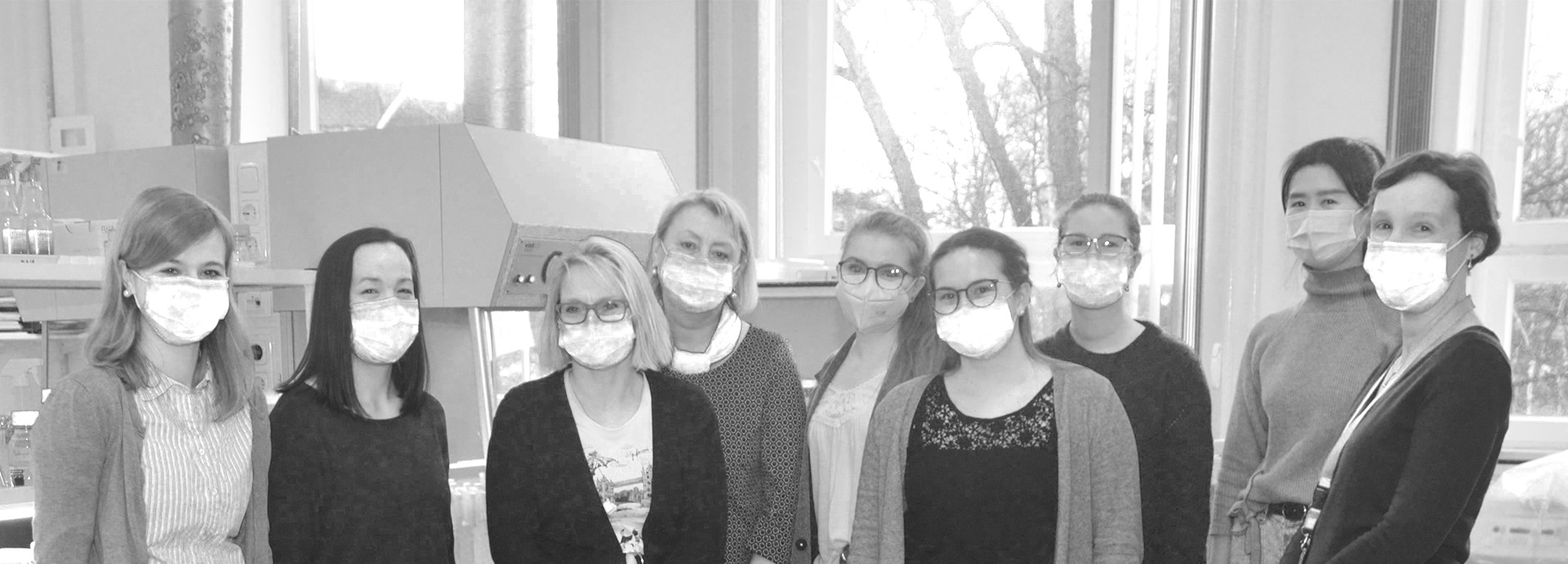anvajo: Thank you very much for taking the time for our interview. First, I would like to know: How did you hear about anvajo?
Dr. Hannemann: We were contacted by a sales employee via e-mail. We liked the fact that it was a personalized approach, they collected information of our work in advance. Since we were actually looking for a cell counter, it seemed like a good opportunity to test the fluidlab.
anvajo: Can you briefly describe your tasks at the institute and give insights into your current projects?
Dr. Hannemann: I head a research group at the Institute of Clinical Pharmacology and Toxicology. We deal with the mechanisms that can lead to chronic diseases, such as tumour diseases or cardiovascular diseases.
We also have a project that deals with the development of pulmonary hypertension in people who work at high altitudes. In a cooperation with Chilean colleagues, we work with mining and quarrying workers who live at sea level and travel up into the mountains every week. Some of the workers develop pulmonary hypertension over the years, while others do not. We are investigating whether it is possible to identify pulmonary hypertension in advance and whether there are biomarkers that can predict if a person will develop a condition.
anvajo: Do you cooperate with clinics for such projects, as for example with the Chilean colleagues?
Dr. Hannemann: In this project, we are working with a research group at the University Arturo Prat in Iquique in northern Chile, which has contacts to the local copper mining company. They take blood samples from the mine workers before they go up into the mountains and also during their work in the mines, which is then available for our research. For other projects, we cooperate with clinics inside and outside of Germany.
anvajo: That means you look at the cells in the blood?
Dr Hannemann: Yes, some biomarkers have already shown that their increase can predict whether the person has a higher chance of developing pulmonary hypertension. We measure this biomarker in the blood when the person is first taken to the mountains. This way we can find an indication in advance of who will get sick and who will not.
anvajo: Did you use the fluidlabR-300 for this?
Dr. Hannemann: No, the blood samples of the mine workers are taken in laboratories by company doctors on site and then sent to us for our analyses. In clinical pharmacology we always try to work translationally. We always have a clinical question. To understand where it comes from, we take a step back. For this, we either use animal models or a cell culture model, and that is where the fluidlab comes in, of course. We have different cells and try to cultivate them under different conditions and understand the observed changes.
anvajo: Which cells are you currently working with using the fluidlab R-300?
Dr. Hannemann: We are working on a project with 5 different tumour cell lines for breast carcinoma, i.e., breast cancer cell lines, and one cell line that represents normal conditions. We are investigating what causes hypoxia, i.e., a lack of oxygen. A tumour can only grow to a certain size. Then it has to attach itself to the vascular system to ensure its oxygen supply. The question is what happens in these cells and whether it can be beneficial to intervene in this process. In this case, we have a hypoxia facility where we regulate the oxygen content of the air, which is 21%, down to 1% to observe how that affects the cells. Does the growth slow down? Do the cells change their genetic identity, so they switch on some genes and switch off others? We compare this to the behaviour observed under normal oxygen conditions.
For these experiments, we use the fluidlab because we want to seed cells under defined conditions. To be able to compare, the same number of cells must be initially placed in each well for each condition. At this point, we are very happy that we can use the handy fluidlab in pocket format.
anvajo: How did you ensure that the same number of cells was in each well before using our fluidlab?
Dr. Hannemann: Probably like many others: manually with the Neubauer counting chamber. That caused a lot of frustration in the lab.
anvajo: That means you mainly use the Cell Counter application on the fluidlab R-300? Or do you also use another function?
Dr. Hannemann: We also measure cell viability with the fluidlab. This is a great feature that allows you to easily determine the cell number and also the cell viability in the same sample without staining, in order to then evaluate how healthy the cells are.
anvajo: You just mentioned that the fluidlab is small and portable and that you can determine cell viability without staining. Is there anything else about the device that you like and that convinced you?
Dr. Hannemann: What we really like is that it can be operated intuitively. It is kept simple so that anyone new to the lab can use it. We also like that it gives very reproducible results when measuring a sample multiple times.
anvajo: Thank you very much for the exciting interview and the insight into your work!






